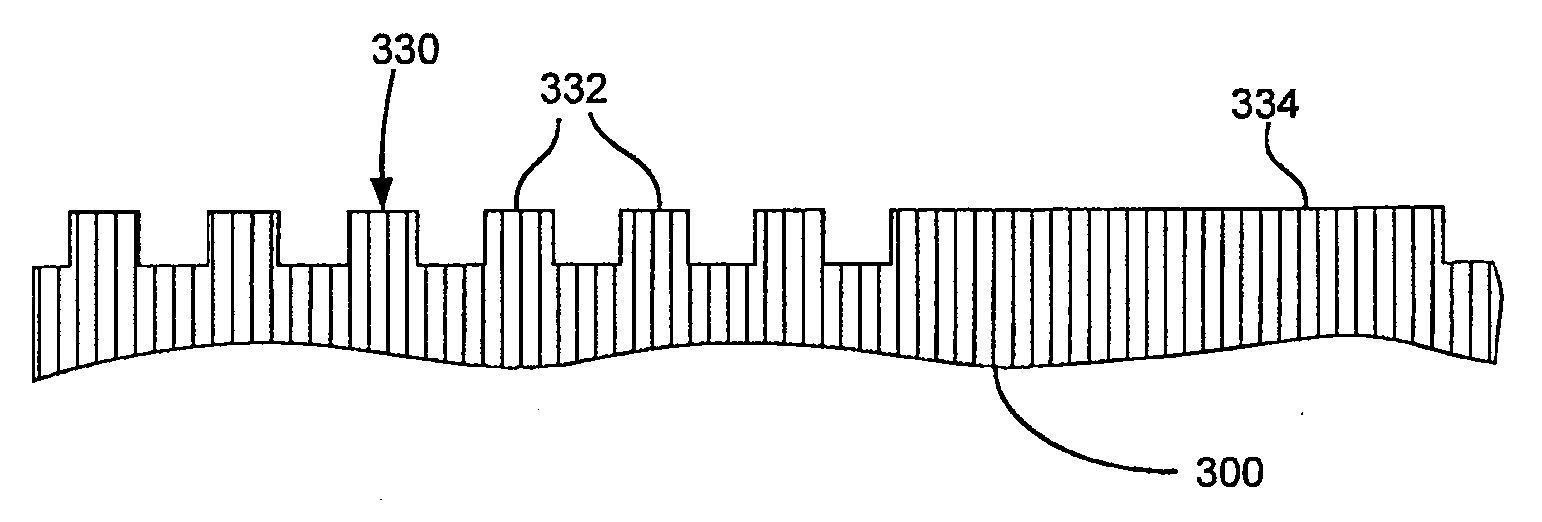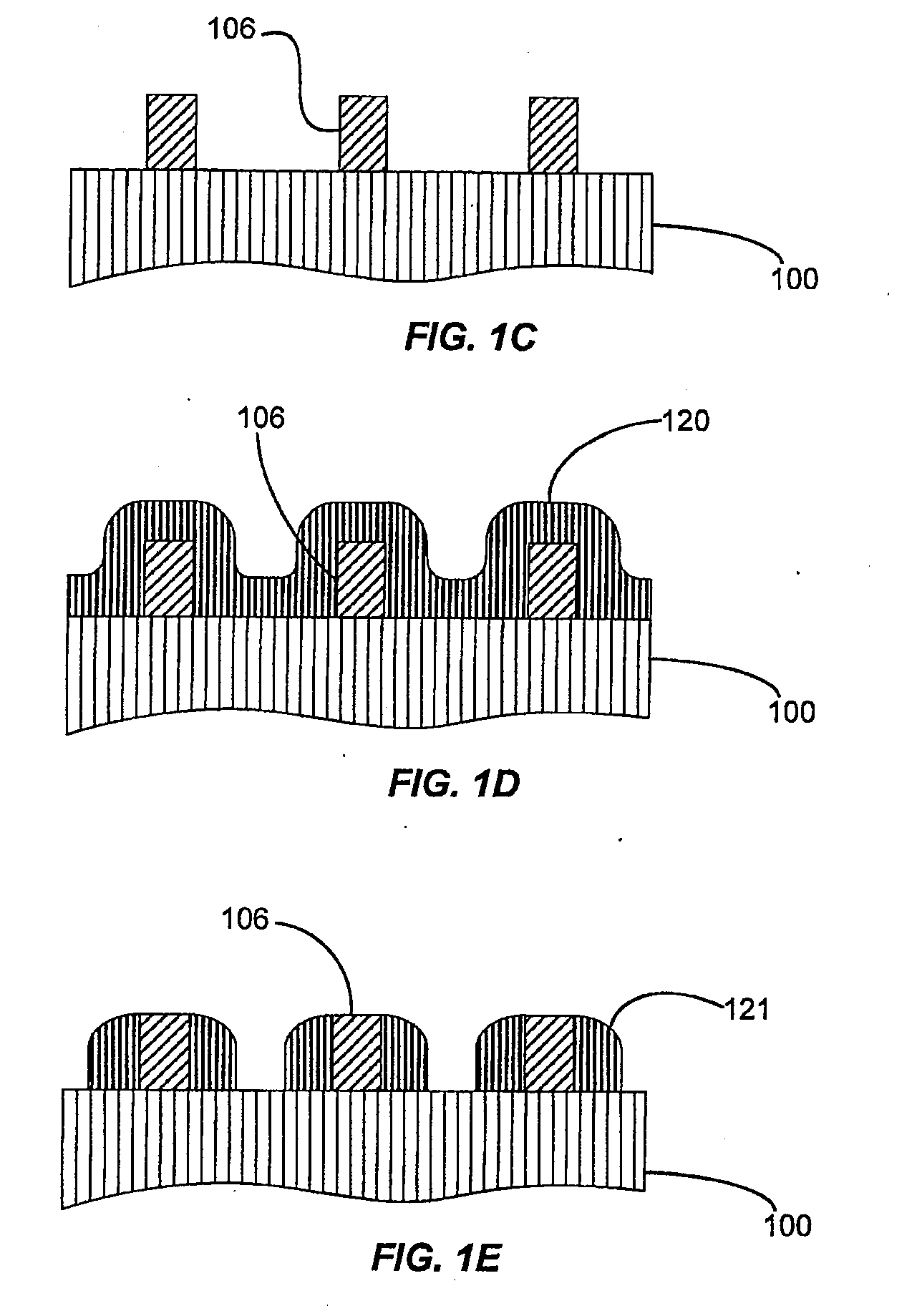Integral patterning of large features along with array using spacer mask patterning process flow
- Summary
- Abstract
- Description
- Claims
- Application Information
AI Technical Summary
Benefits of technology
Problems solved by technology
Method used
Image
Examples
Embodiment Construction
[0019]Embodiments of the present invention pertain to methods of forming patterned features on a substrate having an increased density (i.e. reduced pitch) as compared to what is possible using standard photolithography processing techniques using a single high-resolution photomask while also allowing both the width of the patterned features and spacing (trench width) between the patterned features to vary within an integrated circuit.
[0020]One of the most common uses of a self-aligned double patterning (SADP) process is to form high density arrays of parallel lines. A positive tone SADP process (such as the process of FIG. 1) uses the spacers as the etch mask, resulting in lines of the same width. While this lends itself readily to forming bit lines, wider lines and features (for example, pads, power supply lines, string select lines, etc.) are usually necessary on the same layer to form working devices. A negative tone SADP process introduces a gapfill material between the spacers...
PUM
 Login to View More
Login to View More Abstract
Description
Claims
Application Information
 Login to View More
Login to View More - R&D
- Intellectual Property
- Life Sciences
- Materials
- Tech Scout
- Unparalleled Data Quality
- Higher Quality Content
- 60% Fewer Hallucinations
Browse by: Latest US Patents, China's latest patents, Technical Efficacy Thesaurus, Application Domain, Technology Topic, Popular Technical Reports.
© 2025 PatSnap. All rights reserved.Legal|Privacy policy|Modern Slavery Act Transparency Statement|Sitemap|About US| Contact US: help@patsnap.com



